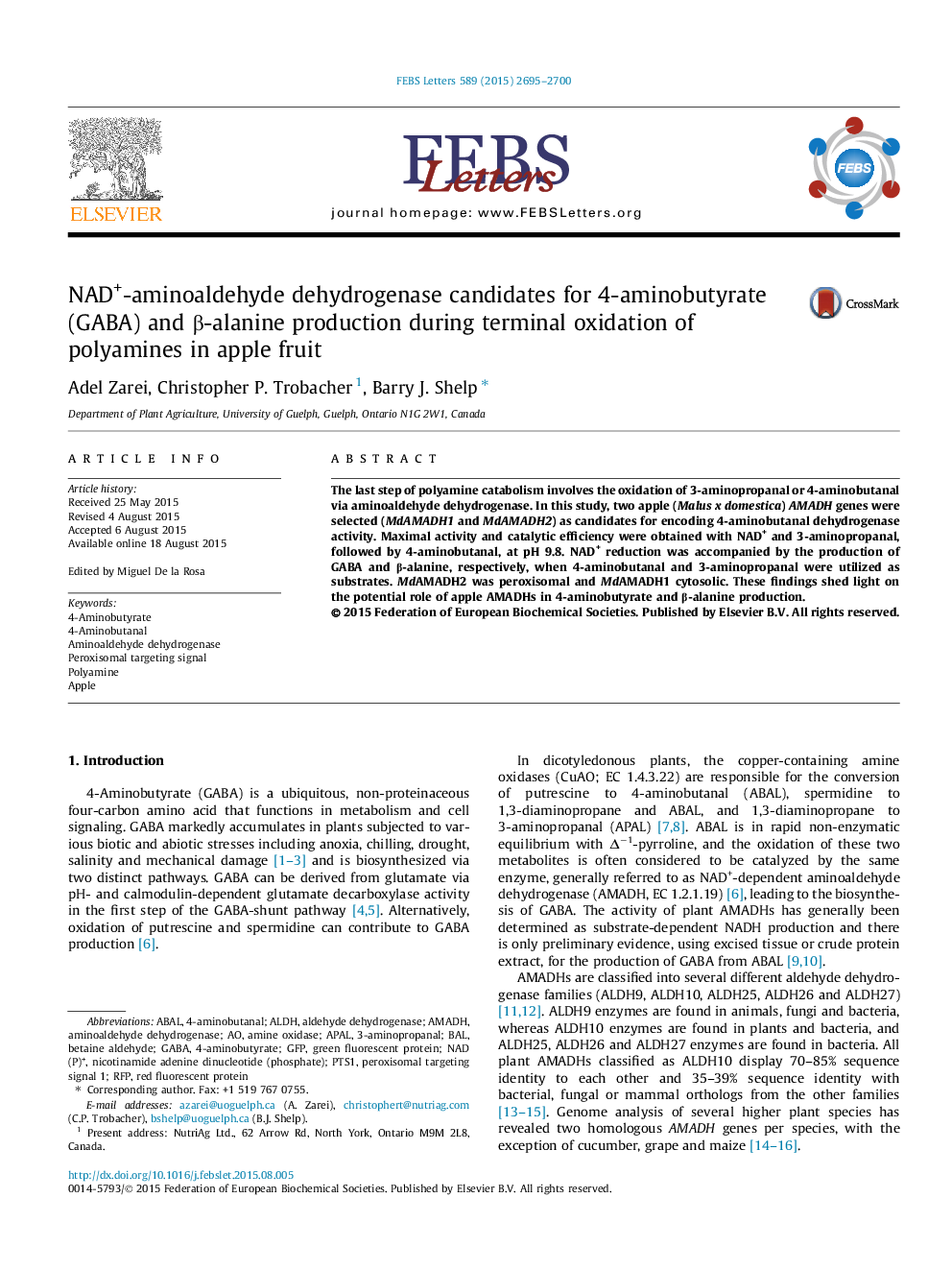| Article ID | Journal | Published Year | Pages | File Type |
|---|---|---|---|---|
| 2047421 | FEBS Letters | 2015 | 6 Pages |
â¢Recombinant MdAMADHs utilized 3-aminopropanal and 4-aminobutanal.â¢MdAMADH2 was peroxisomal whereas MdAMADH1 was cytosolic.â¢A role for MdAMADHs in polyamine oxidation in apple fruit is proposed.
The last step of polyamine catabolism involves the oxidation of 3-aminopropanal or 4-aminobutanal via aminoaldehyde dehydrogenase. In this study, two apple (Malus x domestica) AMADH genes were selected (MdAMADH1 and MdAMADH2) as candidates for encoding 4-aminobutanal dehydrogenase activity. Maximal activity and catalytic efficiency were obtained with NAD+ and 3-aminopropanal, followed by 4-aminobutanal, at pH 9.8. NAD+ reduction was accompanied by the production of GABA and β-alanine, respectively, when 4-aminobutanal and 3-aminopropanal were utilized as substrates. MdAMADH2 was peroxisomal and MdAMADH1 cytosolic. These findings shed light on the potential role of apple AMADHs in 4-aminobutyrate and β-alanine production.
